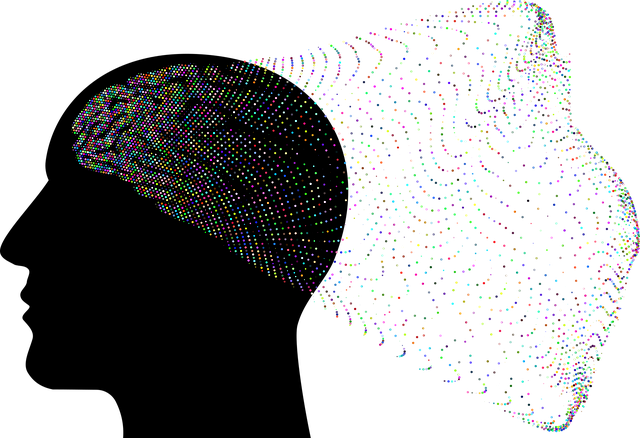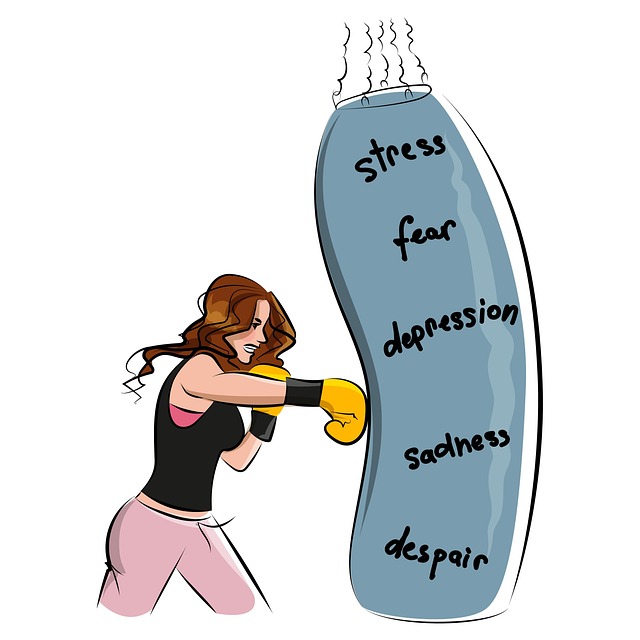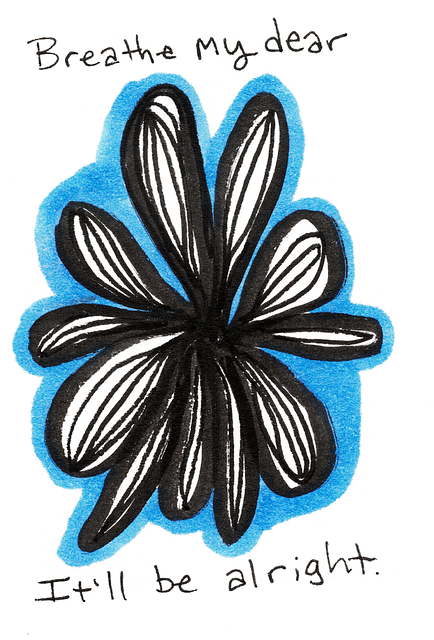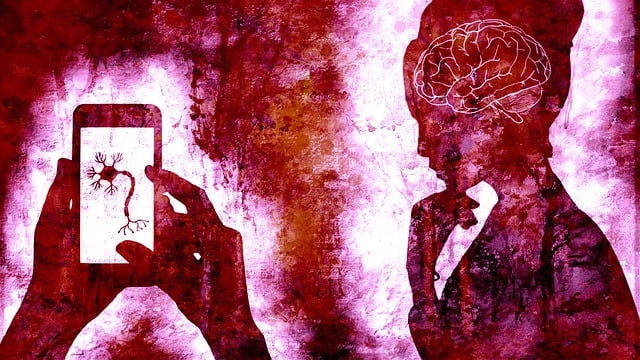Media representation of mental health conditions, especially anxiety disorders like Panic Disorder in Highlands Ranch, significantly impacts public perception. Accurate portrayals reduce stigma and encourage therapy-seeking without judgment, while stereotypes perpetuate misconceptions and marginalize struggling individuals. Responsible media coverage involves showcasing the complexities of mental illness, diverse manifestations, and effective therapies like compassion cultivation practices for anxiety relief. Authentic storytelling, collaboration with mental health experts, and integrating mood management strategies in media can foster understanding and challenge stigma, making it easier for individuals to find support and initiate healing journeys, such as those featured in a case study on Highlands Ranch Panic Disorder and Anxiety Attacks Therapy.
Mental illness representation in media is a complex issue, often perpetuating stereotypes or spreading misinformation. This article delves into the challenges posed by these portrayals and offers solutions for more accurate and empathetic depictions. We explore the profound impact of media on public understanding, highlighting the dangers of negative stereotypes. Furthermore, we present strategies to foster responsible reporting. A case study focusing on ‘Highlands Ranch Panic Disorder and Anxiety Attacks Therapy’ demonstrates a promising approach to challenging societal perceptions and promoting mental health awareness through innovative treatment methods.
- Understanding Mental Illness Representation in Media
- The Impact of Stereotypes and Misinformation
- Strategies for Accurate and Empathic Depictions
- Case Study: Highlands Ranch Panic Disorder and Anxiety Attacks Therapy as a Solution
Understanding Mental Illness Representation in Media

Understanding mental illness representation in media is a complex task that requires careful consideration. The way mental health conditions are portrayed can significantly impact public perception and understanding. For instance, conditions like Highlands Ranch panic disorder and anxiety attacks are often depicted with varying levels of accuracy. Accurate representation helps reduce stigma, promotes empathy, and encourages those struggling to seek therapy without fear of judgment. Conversely, stereotypical or inaccurate portrayals can perpetuate misconceptions, leading to further marginalization of individuals dealing with these challenges.
Media has a powerful role in shaping societal attitudes, making responsible representation crucial. This is especially true for platforms that reach broad audiences, such as television and film. Proper representation involves showcasing the nuances of mental illness, including its diverse manifestations and effective therapeutic approaches like anxiety therapy. By integrating these aspects, media can contribute to a more inclusive and supportive environment where individuals are encouraged to seek help without hesitation. Moreover, it aids in fostering self-awareness exercises and promotes better mood management strategies for both affected individuals and the broader community.
The Impact of Stereotypes and Misinformation

The media’s portrayal of mental illness often perpetuates harmful stereotypes and misinformation, which can significantly impact public understanding and treatment-seeking behaviors. When mental health conditions are depicted with biased or inaccurate representations, it creates a barrier to receiving effective support. For instance, the portrayal of anxiety disorders, such as Panic Disorder in Highlands Ranch, may often focus on sensationalized symptoms or misrepresent the complexities of the condition. This can lead to stigma and discourage individuals from discussing their struggles openly. Many media platforms still rely on exaggerated or simplistic narratives, failing to capture the nuances of different mental health challenges.
Such misconceptions might discourage people from pursuing therapy or engaging in evidence-based practices like Compassion Cultivation Practices for Anxiety Relief. Misinformation can hinder access to accurate Mental Health Education Programs Design, which are crucial for fostering empathy and reducing discrimination. By challenging these stereotypes and promoting authentic storytelling, media has the potential to revolutionize public perception, making it easier for individuals facing similar struggles, like those experiencing anxiety attacks in Highlands Ranch, to find support and initiate their journey towards healing.
Strategies for Accurate and Empathic Depictions

Creating accurate and empathetic depictions of mental illness in media is crucial for challenging stigma and promoting understanding. When portraying conditions like Panic Disorder and Anxiety Attacks, it’s essential to collaborate with experts, including therapists and mental health advocates from Highlands Ranch. Their insights can ensure that symptoms, experiences, and recovery paths are portrayed authentically. This involves delving into the complexities of the condition, not just its surface-level manifestations, and avoiding simplistic or sensationalized representations.
A well-rounded approach includes integrating strategies for mood management and self-care practices within storylines. By showcasing characters navigating therapy, building supportive networks, and adopting healthy coping mechanisms, media can offer viewers valuable insights into mental wellness. Leveraging a Mental Wellness Podcast Series Production focused on these themes further amplifies positive messaging. Such initiatives contribute to a more nuanced and compassionate understanding of mental health struggles in society.
Case Study: Highlands Ranch Panic Disorder and Anxiety Attacks Therapy as a Solution

In the context of mental health representation in media, a notable case study is the portrayal and eventual therapy for Highlands Ranch Panic Disorder and Anxiety Attacks. This narrative offers a compelling solution to the challenge of stigmatization often associated with mental illness. The story highlights how effective therapeutic approaches, such as those focusing on compassion cultivation practices and confidence-boosting strategies, can significantly improve outcomes.
Through this case study, we witness a character’s journey from struggle to recovery, emphasizing the importance of understanding and treating anxiety disorders like panic disorder. By incorporating self-esteem improvement techniques alongside traditional therapy, the story showcases a holistic approach that empowers individuals to manage their mental health effectively. This not only challenges stereotypical media representations but also provides hope and practical insights for those dealing with similar conditions.
Mental illness representation in media has long been a topic of debate, with stereotypes and misinformation perpetuating stigma. However, initiatives like the Highlands Ranch Panic Disorder and Anxiety Attacks Therapy offer promising solutions. By prioritizing accurate and empathetic depictions, media can foster understanding and reduce the isolation felt by those struggling with mental health issues. This case study highlights the potential for therapeutic approaches to not only challenge negative representations but also provide valuable insights into effective strategies for media creators looking to make a positive impact.














